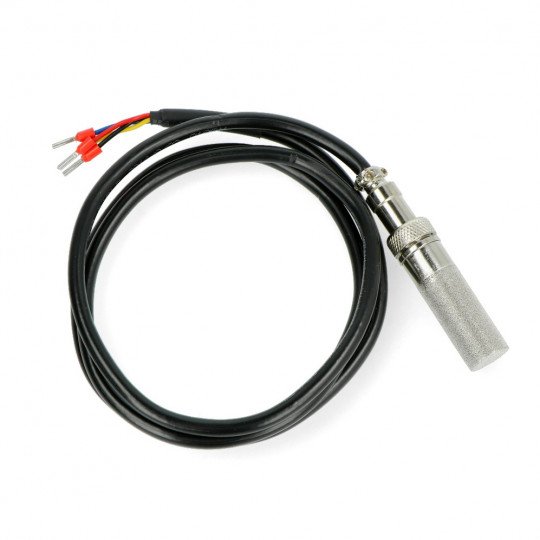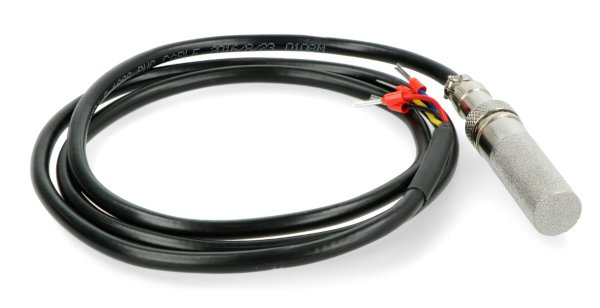Product description: SHT-30 - weatherproof temperature and humidity sensor - 1m - Adafruit 4099
Temperature and humidity sensor SHT-30 equipped with a metal mesh resistant to weather conditions and a 1 m long cable. The measurement range for temperature is from -40°C to 125°C with an accuracy of 0.5°C, while for humidity from 0 to 100% RH with an accuracy of 2%. SHT-30 is powered by a voltage of 3 V to 5 V. It communicates with the microcontroller via the I2C bus.
SHT-30 Sensor Specifications
- Supply voltage: 3 V to 5 V
- Weather protection net
- Temperature
- Measurement range: -40°C to 125°C
- Accuracy: 0.5°C
- Humidity
- Measurement range: 0% RH to 100% RH
- Accuracy: 0.2% RH
- Interface: I2C
- Leads: 4 wires
- Red: VCC - 3C to 5V
- Black: GND - ground
- Green: SDA - Data Line
- Yellow: SCL - clock line
- Sensor dimensions: 50 x 14 x 14 mm
- Cable length: 1 m
*RH - Relative humidity expressed as a percentage. This is the ratio of the actual moisture in the air to the maximum amount that the air can hold at a given temperature.
Arduino compatible product The manufacturer has prepared a user guide and a library with an example program for Arduino users. |
The sensor has a mesh that protects against weather conditions.
Durable and resistant temperature and humidity sensor
Sensor SHT-30 – weatherproof temperature and humidity sensor I2C - 1m - Adafruit 4099 is a device that was designed for use in situations unfavorable for most electronic devices.
The Adafruit SHT-30 sensor is designed to withstand extreme temperatures (from -40°C to 125°C) and moisture, making it ideal for projects that involve using the sensor outdoors, such as building a home weather station.
Convenient use in the project
The device communicates via the I2C interface and is powered by a voltage of 3 V to 5 V, so you can easily connect it to a microcontroller that is a logical element in your project (for example, Arduino, for which the sensor manufacturer provides additional materials and libraries).
The sensor is also equipped with a one-meter cable that allows the sensor to be placed in the desired location (even in conditions that are unsuitable for the rest of the device).
Useful links |












































































































































































































































































































































